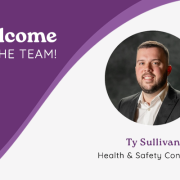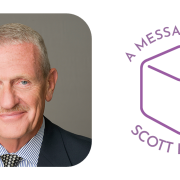
We’re going to spend a little time today talking about wellness programs and the whole concept of companies that try to implement an employee wellness program. At the Lawson group, we talk about wellness programs and the fact that the business owners we talk to want a wellness program, but nobody wants to pay for one.
It is important to understand that there really is no actual definition in the workplace of what constitutes an employee wellness program. The general thought process is that everybody wants their employees to be healthier, but again, they don’t even know what that means. So, they struggle to come up with what a wellness program should include.
Our Approach
At The Lawson Group, the approach we take to wellness programs is twofold. First and foremost is to try to get your employees to be as healthy as they can be. Secondly, we try to teach employees to be better consumers of healthcare. Both things go hand-in-hand to hopefully make people healthier and spend less money when they’re not as healthy.
The Risk of Health Risk Assessments
A lot of people that ask us to do a wellness program want to start with something called the health risk assessment. This is a very popular term in the wellness space today. A health risk assessment can be administered in a variety of ways such as paper form, via computer, or as a questionnaire or survey. It can also be conducted by an employee or wellness coordinator engaging employees and talking to them about their dietary habits, exercise habits, smoking and drinking habits, and more.
Having done this for well over a decade, we’ve found that trying to administer a health risk assessment in the early stages of a wellness program will not necessarily give you the results that you want or need. We find that in companies who elect to begin their program with a health risk assessment, having never focused much on wellness to begin with, end up intimidating their employees because they’re not sure what you’re really looking for. When you start asking about their personal habits, a lot of people look at that as an invasion of their privacy and are less likely to give you honest and valuable answers.
If the goal is to identify the at-risk people in your population or to pinpoint risky behaviors to be mitigated by implementing a wellness program, we don’t always recommend leading with a health risk assessment.
One Step at a Time: Walking Programs
What we favor instead is starting with medium or low-level impact activities to introduce your employees to the idea of a wellness program. An example of this could be a walking program that involves people tracking their steps with a pedometer or making subtle changes like installing water fountains throughout the workplace to encourage people to drink more water.
Then, after five or six months of implementing these little changes, you can sit down with your employees and inform them that the walking program and water fountains are actually part of your wellness program, and that the next phase involves setting specific and measurable wellness goals. By slowly transitioning your employees into the program, you’ll notice that your population will be more engaged and likely to not only participate, but also provide you with valuable information that you can use going forward.
About The Lawson Group
Since 1978, The Lawson Group has been in the “White Horse” business. That is to say, we help companies do things that are ultimately beneficial for them that they are sometimes unaware of. Our first endeavor was worker health and safety, mostly related to OSHA compliance issues, focusing on the industrial hygiene side of that equation regarding chemicals and noise, indoor air quality, and lead and asbestos in the workplace. Since becoming a third-party administrator in 1994, we now manage the workers’ comp programs for over 300 New Hampshire employers. In 2000, we entered the employee wellness business. Our primary effort is to work with employers and their employees to make better use of their health insurance dollars by working to help them become healthier and better consumers of healthcare. We welcome your inquiries regarding our services. Contact us to learn more.





